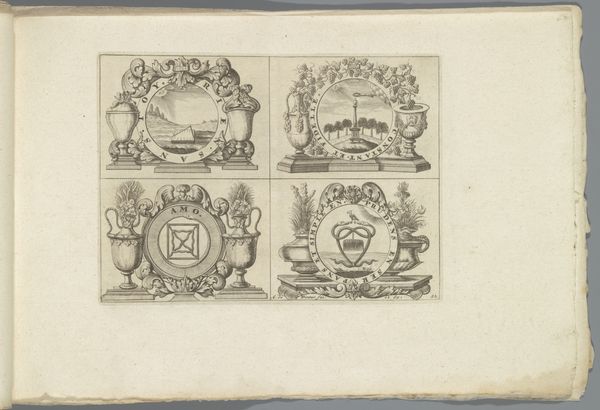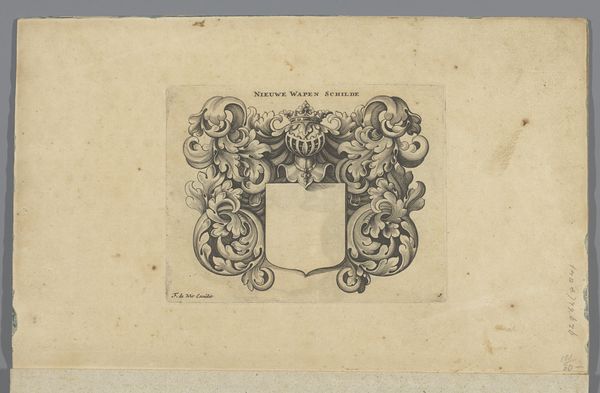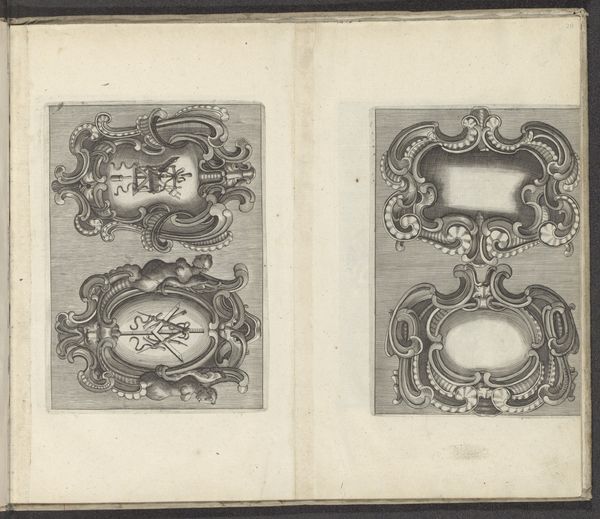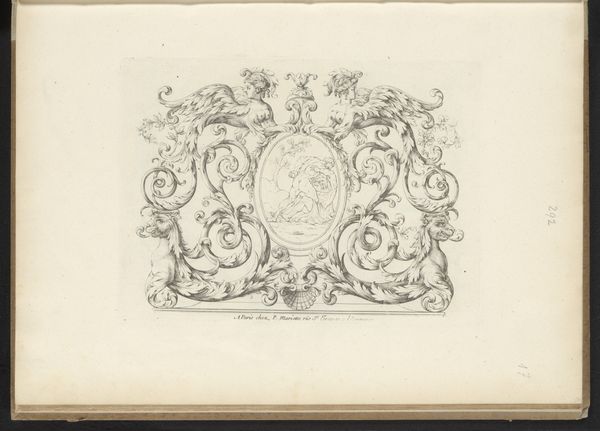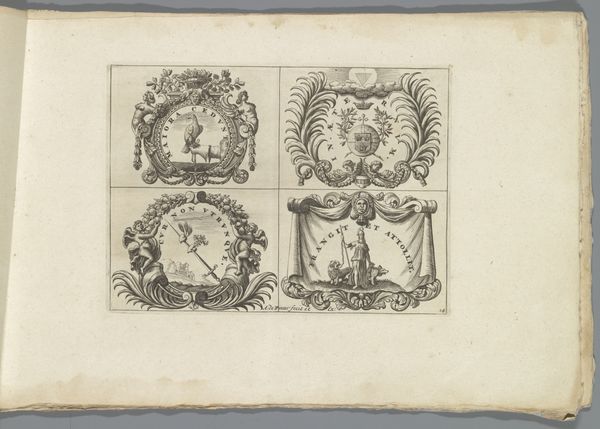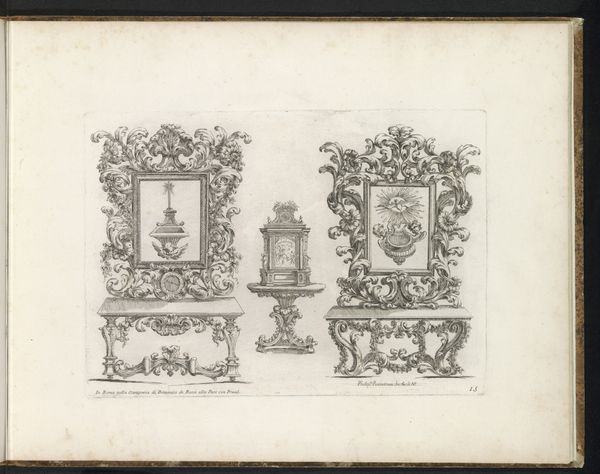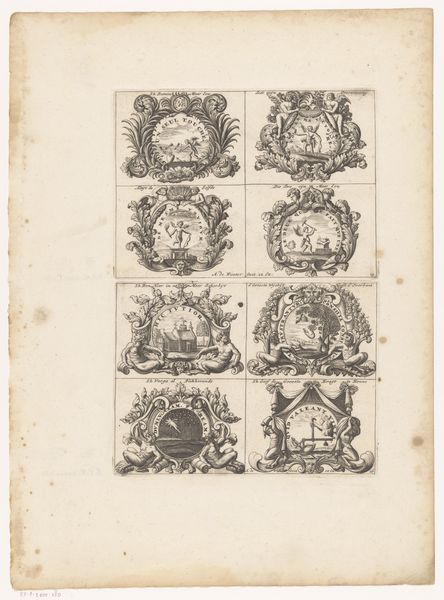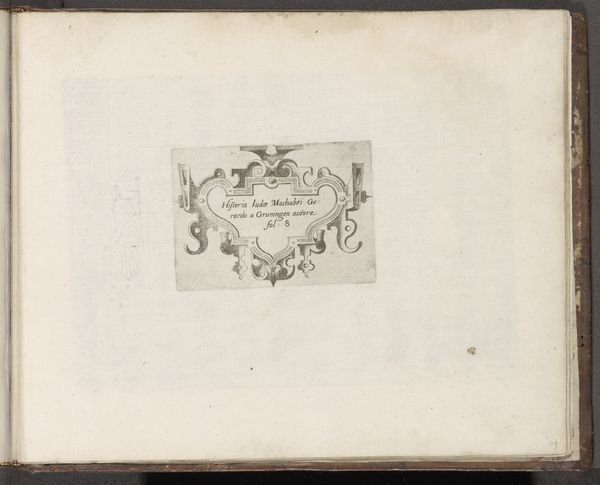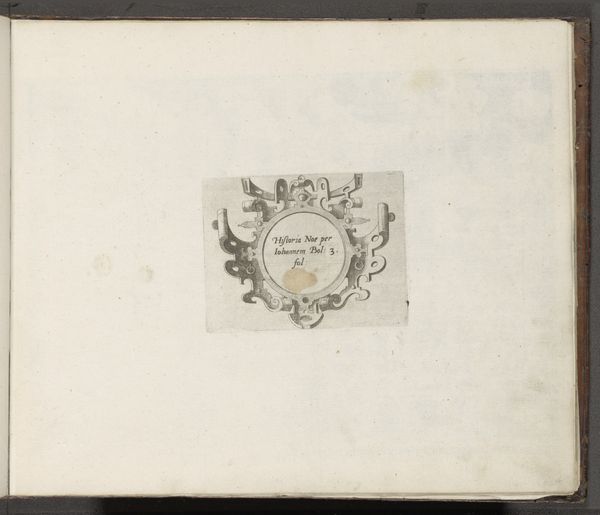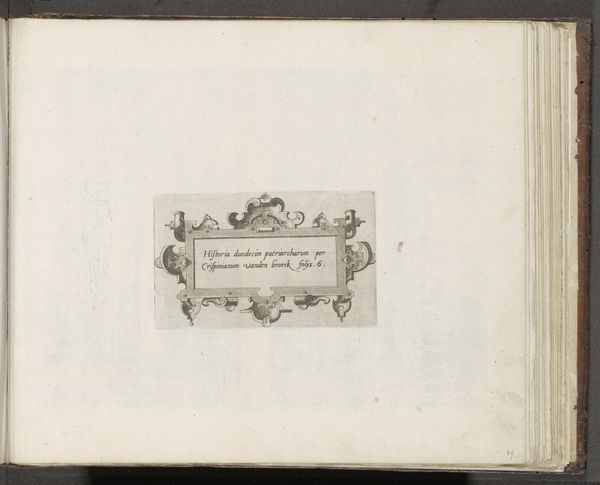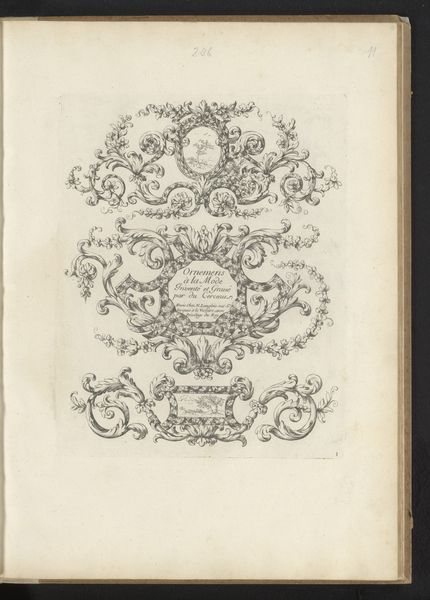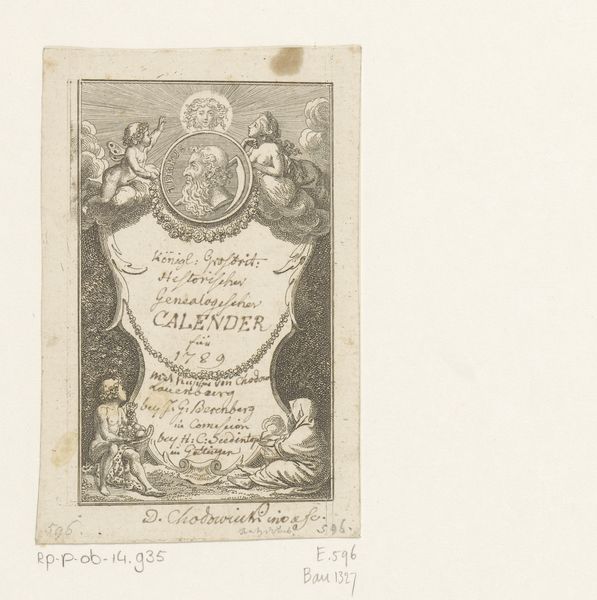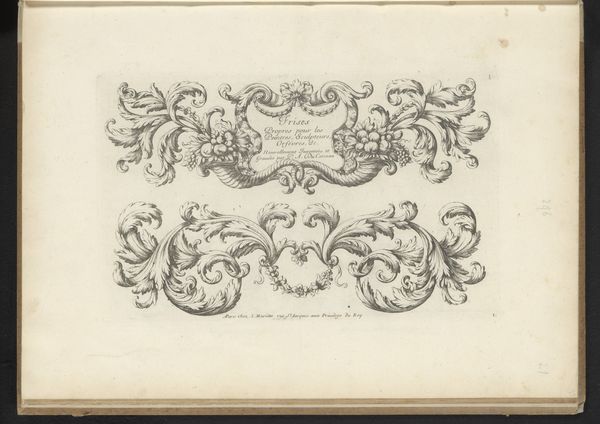
print, engraving
#
allegory
#
baroque
# print
#
form
#
line
#
history-painting
#
engraving
Dimensions: height 135 mm, width 185 mm
Copyright: Rijks Museum: Open Domain
Curator: This engraving, titled "Prent 22 uit serie \"Livre des plus belles devises..."," comes to us from Anthonie de Winter in 1697. It's currently held at the Rijksmuseum. The print consists of four separate emblem designs arranged on a single sheet. Editor: I'm immediately struck by the intricate linework. You can really see the engraver’s hand at work—the deliberate choices about how the light plays across the surface, almost like different textures rendered with only lines. It seems intensely crafted, methodical. Curator: Indeed. Emblem books were very popular in the 17th and 18th centuries. They were aimed at an educated, elite audience, combining images with moral lessons. These emblems represent virtues or principles, often referencing classical literature or mythology. It’s a highly codified visual language, almost like a game of interpretation. Editor: I find the symbols themselves so fascinating: the sun, the bird, ships at sea... How much of the meaning would be clear to contemporary audiences who encountered images like these, considering their materiality— the cost of printing, the distribution networks? It makes you wonder about the democratization of images versus today’s environment. Curator: Good question. Dissemination, yes. The symbols certainly carried weight within courtly and intellectual circles of the era. Knowledge was performative in that era and visual literacy conveyed a great deal about someone's class. We should not overlook how the printed format also affected the production of these emblems: standardization of imagery versus handmade art, wider reach to audiences previously unexposed to such ideas... Editor: Right, how this particular engraving relates to, and diverges from, hand-drawn designs. The print flattens things, making textures reliant on cross-hatching and hatching techniques. But the reproducibility offers something quite new in art—a social experience accessible, if you were affluent, to a much wider public. It moves knowledge sharing forward significantly. Curator: Well put! These emblem books shaped discourse within elite European society, influencing political thought and moral education. De Winter's work reminds us that art serves not only aesthetic but also ideological purposes. Editor: Precisely. By thinking about the materials and the act of production, we glimpse a sliver into this image’s own cultural circulation back in its own time, the labour involved and, by extension, a tiny glimpse into the world of art as commodity itself. Curator: Ultimately, exploring this work encourages us to consider the complex relationships between artistic creation, social values, and political power during the Baroque era. Editor: Exactly. I walk away feeling I have gleaned more from not only WHAT de Winter was presenting, but HOW.
Comments
No comments
Be the first to comment and join the conversation on the ultimate creative platform.
